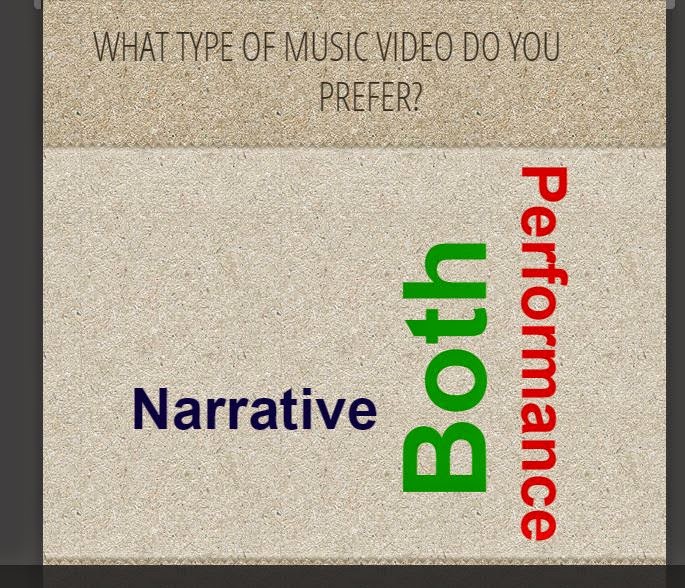All music videos follow certain conventions but the style of a music video will greatly depend on the genre, which then effects what conventions are used although there are some general conventions. General conventions include artist singing into camera, and a range of close up, medium and long shots. The promotional package which includes the digipak and advert can also follow institutional conventions by using features of real media products.
After a lot of similar product research and looking at the conventions of a typical music video, Becka and I decided that we would use the majority of these conventions to create an effective music video. Our music video has been inspired by artists such as Ed Sheeran and Tom Odell whose songs are of a similar genre and pace. One of the conventions that we used was the artist singing into camera. This convention is commonly used across many genres of music videos and helps to engage the audience with the artist giving the audience a more personal feel from what they are watching. We felt this was important convention to use because the song and video revolves around different relationships and all kinds of love.
Another convention we used was having both a performance and narrative based music video. Music videos with the same genre as ours usually had a mix of both concepts and we believed that we could emphasise feelings and emotions stronger through narrative visuals alongside the performance shots and lyrics. We applied Goodwin’s theory of ‘the relationship between lyrics and visuals’ because we felt that the visuals help to highlight the meaning of lyrics for the audience.
We also used conventions of shot and transition length and shot types. From our research, we found that for our chosen genre, the length of shot was approximately 5 or 6 seconds and each shot transition was either a regular cut or slow cross dissolve. We decided to use both of these conventions so that our audience could recognise the genre from the pace. Another convention we used was cutting on the beat. This is very common in our style of music video so we felt it was important to use it in order to create a realistic product.
One way that we challenged conventions was by having black and white film for the performance shots. This was inspired from Adele’s music video for ‘Someone Like You’ because we felt that the black and white complimented the feeling of the song and helped to express emotion. Although Adele’s music video was an inspiration, her video is all in black and white, whereas we developed the convention because we only used it for the performance shots so it magnified the meaning of the lyrics.
We stuck to the majority of conventions for our digipak and adverts but we challenged a convention for the front cover on our digipak. We have challenged the conventions by not having a photograph of all the band members which is commonly used on digipaks. We decided not to use a group shot for our front cover and instead used a still from our music video. The still is a shot of Becky and Will looking at the lake with there backs to the camera. We decided to use this still because it helped to reflect the overall feel of our music video to our target audience. Not only does this still challenge conventions because its a two-shot, Becky and Will aren't looking into camera which is frequent convention on the front cover of a digipak.
Overall, I think that we achieved our target of creating a music video that could easily be recognised by the genre and look realistic. We did follow certain conventions which made the filming and editing a little easier because it created a basis for our music video to allow us to work further on. But, having challenged some conventions, we have created a media product that is slightly different and can stand out from other products of the same genre.




